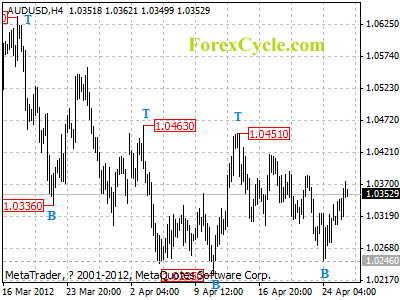Article by Investment U

Don’t be lazy and hand your hard-earned money over to a mutual fund manager who will likely not do as good a job as you or a passive index fund will.
This weekend, as I was driving back from picking up groceries, I was listening to a financial radio talk show. I wasn’t particularly impressed with the host to start with, but then he offered some advice that was so horrible it nearly caused me to veer off the road and into a ditch. He suggested that a caller not invest in stocks because when you buy a stock, someone smarter than you is the person who is selling it.
Instead, he suggested only investing in mutual funds. Keep in mind, he’s a financial advisor who specializes in mutual funds, so we know where his bias is.
After a few minutes more of listening to the program, I had to turn it off in favor of my daughter’s insipid Kidz Bop CDs. Anyone who followed the host’s advice might as well just flush their money down the toilet.
Here’s why.
Most mutual funds underperform the market. In 2011, 84% of stock mutual funds did not beat the broad market or their benchmark index (if a fund is focused on a particular sector like technology or a region like Europe, it will have a different index that it’s expected to beat other than the S&P 500).
Last year was a particularly bad one for mutual fund managers. Normally, the results aren’t quite as dismal. Over the past 10 years, 57% of funds underperformed their benchmark.
To make the radio host’s argument even more laughable, he said those “smart” traders on the other side of the stock trades included many mutual fund managers who did this for a living.
So you should be scared of buying stock from people who are bad at their jobs? Forget that. Where do I sign up to buy from them?
The weak performance of mutual funds doesn’t mean you should avoid all mutual funds. They’re appropriate for investors who don’t like to pick their own stocks and don’t want to put much effort into their portfolio other than asset allocation. But be sure you don’t chase a hot mutual fund because it posted strong performance numbers or has a popular manager.
Instead, invest in index funds with low expense ratios. If you’re investing in index funds, you’re basically just trying to match the market averages. There’s nothing wrong with that. The market goes up over the long haul and if you’re matching the market’s performance, you’ll make money.
If you’re investing in mutual funds, consider the funds in Alexander Green’s Gone Fishin’ Portfolio. These are funds like the Vanguard Emerging Markets Index Fund (VEIEX). The fund has a very low 0.33% expense ratio and has returned an average of 13.11% per year over the past 10 years.
The key to the funds in The Gone Fishin’ Portfolio are the very low fees. Many actively managed funds have significantly higher costs. Usually at least 1% and sometimes much more. That means each year 1% or more of your money is going to the mutual fund company to pay for salaries, toner and Christmas parties. That money is better off in your pocket and the lower fees will improve your returns over the years.
This doesn’t mean that there are no quality mutual funds or managers who will generate solid returns for you – but with six out of 10 fund managers underperforming the market every year, are you really good enough to pick the right one every year? I’m not. That’s why most of my mutual fund holdings are in the funds recommended in The Gone Fishin’ Portfolio – inexpensive funds that are designed to simply match the market returns.
But I don’t put all of my money in those funds. I pick stocks, too. And I’ll match wits with those fund managers any day of the week. It’s not that I’m so smart and they’re so dumb. But as an individual investor, I have opportunities that they don’t.
Individual Investor Advantages
For example, a stock I like that’s currently in The Oxford Club’s Perpetual Income Portfolio is Community Bank System (NYSE: CBU). It’s a small bank located in upstate New York and Pennsylvania. It has a market cap of just over $1 billion and trades an average of 244,000 shares a day.
I like it because it never took a dime of TARP money, pays a 3.6% dividend yield (4.7% based on our entry price in September) and has raised the dividend every year for 19 years.
With just 244,000 shares traded per day, a large mutual fund would have difficulty buying large blocks of stock without moving the share price significantly. As an individual investor, you would have no problem picking up a few thousand shares on any given day.
Also, as an individual investor, you don’t have to worry about marketing. You’re not trying to impress anyone with which stocks you own or trying hard to beat a benchmark. However, a mutual fund, particularly one that isn’t outperforming, better have some of the hottest stocks in its portfolio at the end of the quarter, when its portfolio is revealed, otherwise, as Ricky Ricardo used to say, they’ll have some “’splainin’ to do.”
Additionally, they’ll get rid of their dogs. The fund companies don’t want investors pulling their money (which reduces fees collected) because investors think the fund managers are asleep on the job. But buying hot stocks and dumping beaten up ones is usually the wrong thing to do.
If the fund manager has done his homework and likes a stock because of its prospects and/or value, selling it because it sold off and is cheap isn’t going to help investors in the long run. He should be buying. And similarly, if a stock is hot and is a momentum trade, buying it after it’s popular is also misguided, as it may be difficult to sell so many shares from a big fund when the music stops.
Individual investors have more flexibility than the big guys. You don’t have to publish quarterly reports that will be scrutinized and you can get in and out of stocks whenever you want, without fear of moving the price. You can also switch your strategy at any given time.
If you decide small caps look more attractive than large caps, you can move some of your assets between the two groups, whereas a large cap fund manager is stuck in large caps, no matter how the group is performing.
Even if you’re an investor who doesn’t want to actively manage your money, don’t be lazy and hand it over to a mutual fund manager who will likely not do as good a job as you or a passive index fund will. Pick some great stocks that you expect to hold for the long term, or buy the funds mentioned in The Gone Fishin’ Portfolio. You’ll save a ton of money in fees and likely do a better job than the fund managers do. It would be hard to do worse.
Good Investing,
Marc Lichtenfeld
P.S. I mentioned the Vanguard Emerging Markets Index earlier. If you’re planning on investing in emerging markets, be sure to check out Where In the World Should I Invest? by my friend and colleague Karim Rahemtulla. I had the privilege of reading an early draft. I don’t often describe investing books as a page-turner, but this one is so informative and funny, you’ll have a hard time putting it down.

Article by Investment U




